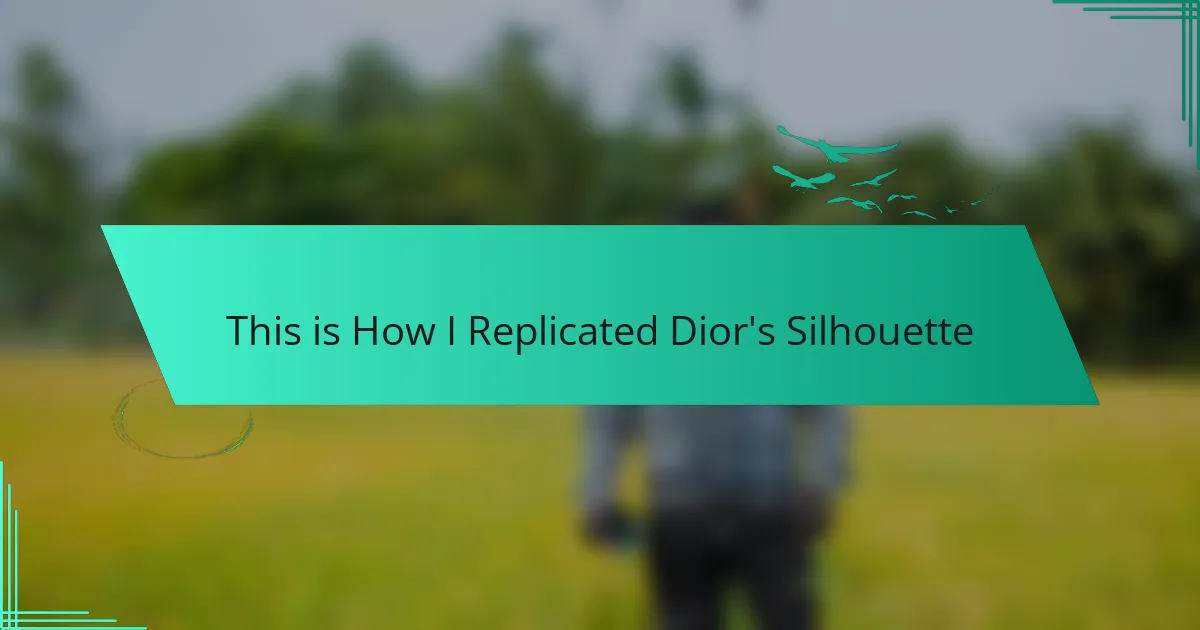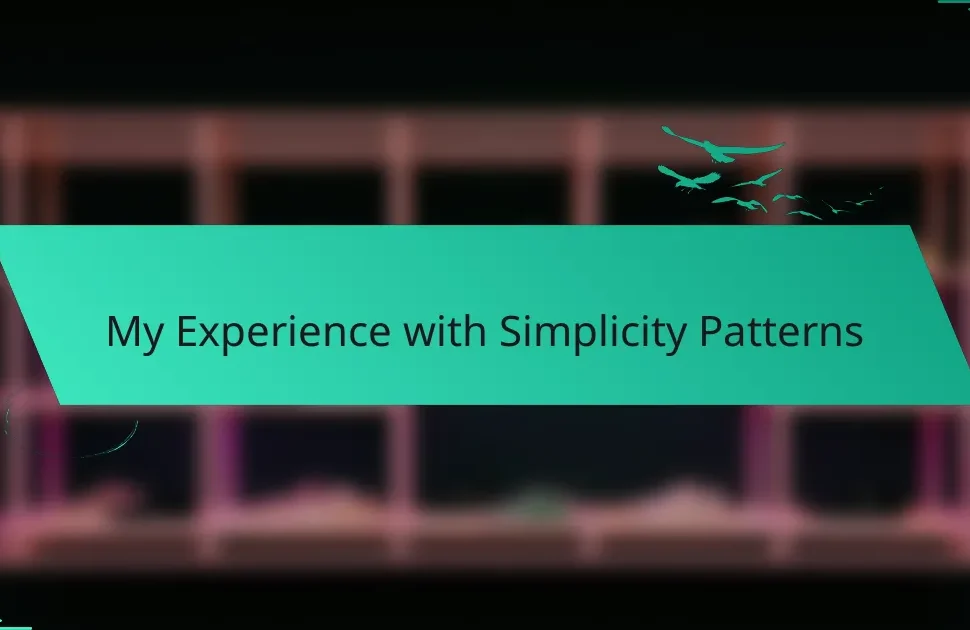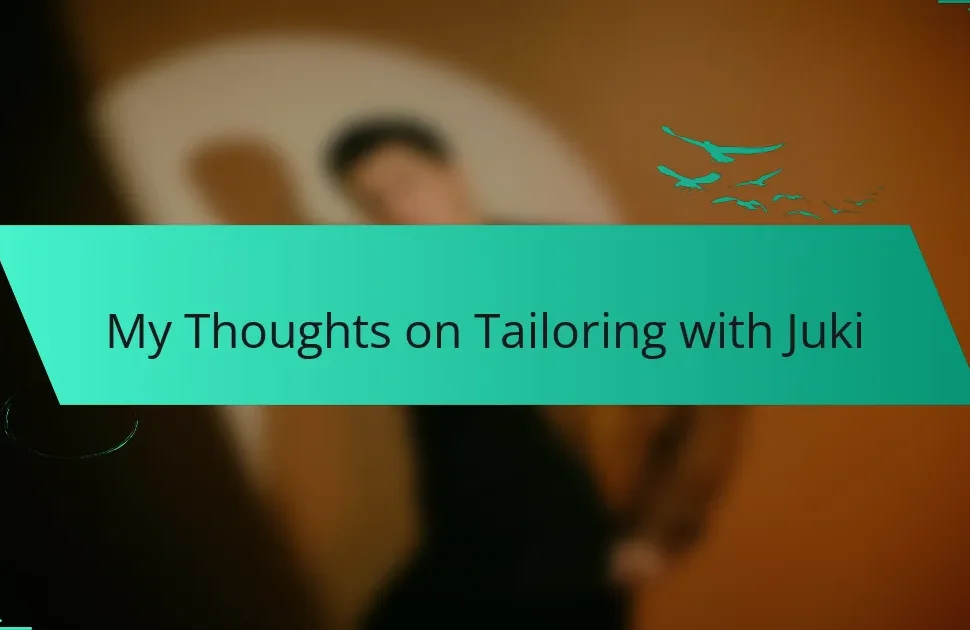Key takeaways
- Vintage fashion combines history and personal expression, allowing individuals to connect with the past while showcasing their unique style.
- Dior’s iconic silhouette celebrates the female form with an hourglass shape, merging structure and softness to enhance elegance and femininity.
- Essential materials for creating vintage-inspired designs include high-quality fabrics, patterning paper, and sewing tools, making the crafting process enjoyable.
- Personalizing vintage looks through tailoring, accessorizing, and integrating modern elements can create a distinct style that reflects individual creativity.
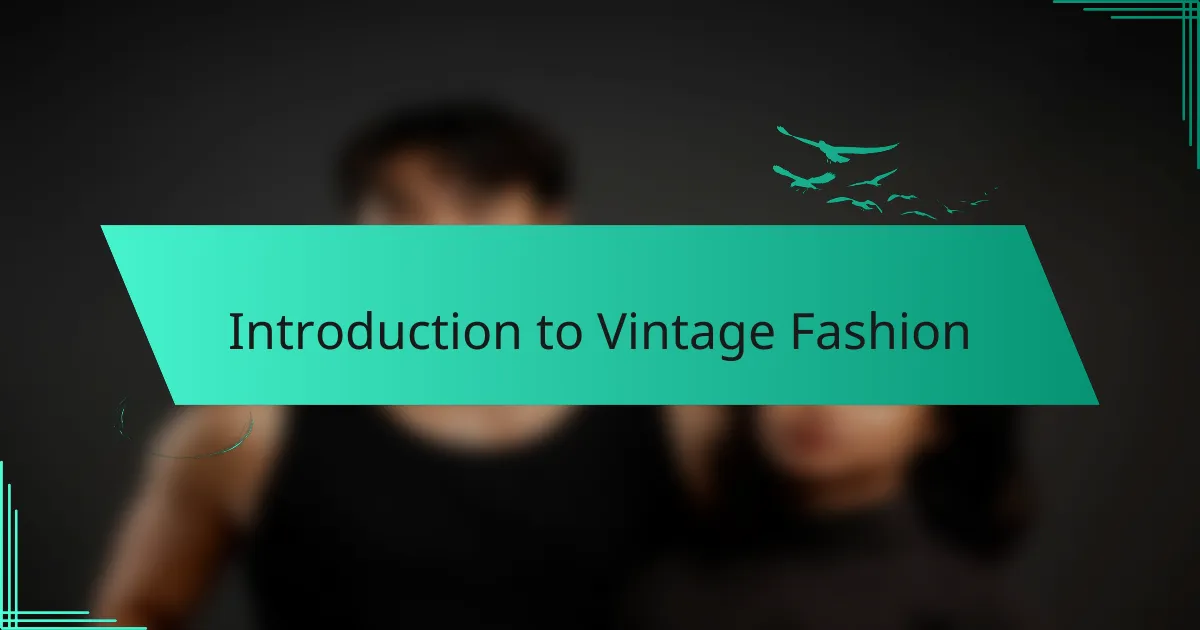
Introduction to Vintage Fashion
Vintage fashion is more than just clothing; it’s a celebration of history and personal expression. I remember the first time I stumbled upon a treasure trove of vintage pieces at a local thrift store. The rush of excitement was palpable as I sifted through garments that had their own stories, each fabric whispering tales of eras gone by.
Why do we find ourselves so drawn to vintage styles? For me, it’s the unique charm they bring, blending nostalgia with modern twists. Imagine walking into a room wearing a beautifully tailored 1960s dress, feeling a connection to a time when fashion was all about individuality. Each piece allows us to channel a moment in history while adding our personal flair.
As I’ve explored the world of vintage fashion, I’ve discovered the artistry involved in these timeless designs. From the intricate stitching to the bold patterns, there’s a craftsmanship that often feels lacking in today’s fast fashion. It’s thrilling to not only appreciate these styles but to recreate them, reshaping each into something uniquely my own.
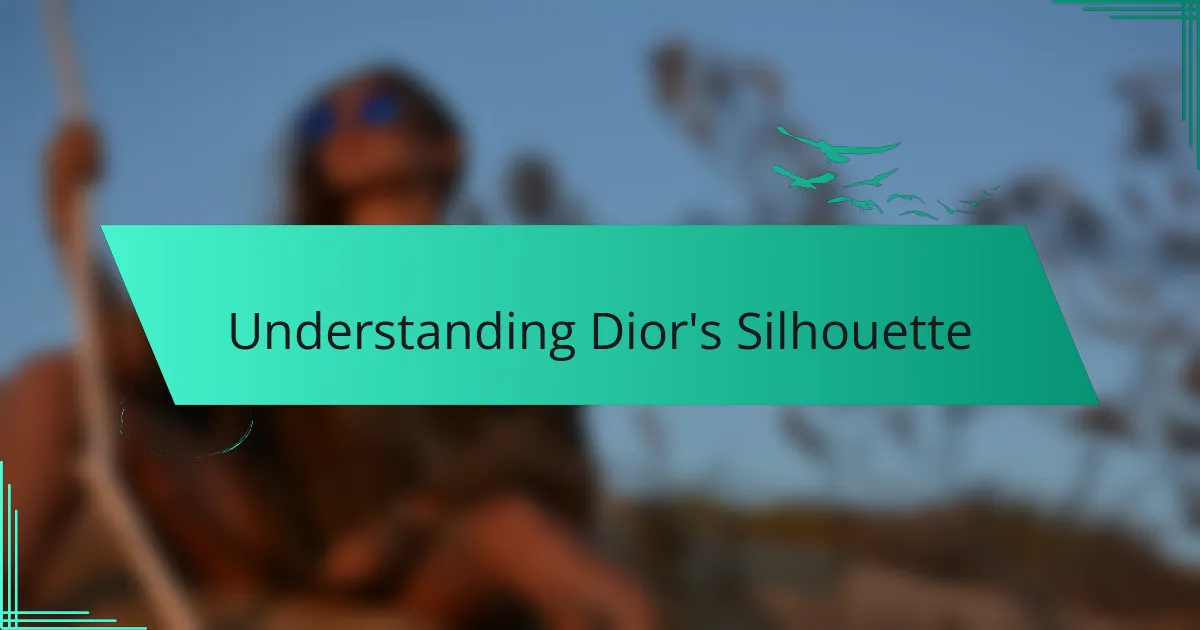
Understanding Dior’s Silhouette
Dior’s silhouette is nothing short of iconic. When I first encountered his designs, I was struck by the way they celebrated the female form, bringing an elegance that seemed almost sculptural. The hourglass shape, emphasized by a cinched waist and full skirt, truly transformed how women carried themselves, injecting a new sense of confidence into their fashion choices.
What makes Dior’s silhouette so compelling? It’s the perfect combination of structure and softness. I distinctly remember trying on a vintage-inspired dress with a fitted bodice and flared skirt, and I felt like I was stepping right out of the 1940s. This silhouette not only flatters various body types but also evokes a sense of nostalgia for a time when clothing had the power to convey grace and femininity.
I appreciate how Dior played with fabric and form, experimenting with tulle and silk to achieve that dreamy look. Each piece tells a story of craftsmanship and artistry—an aspect that truly resonates with me. As I work on replicating these silhouettes, I find myself wondering, how can I blend this classic elegance into my own wardrobe while still maintaining my individuality?

Essential Materials for Replication
When I embarked on replicating Dior’s iconic silhouette, I quickly realized that having the right materials was crucial. Choosing high-quality fabrics not only elevated the final look but also made the crafting process so much more enjoyable. I remember running my fingers across a soft silk that felt luxurious; it instantly inspired me to get to work.
Here’s a basic list of essential materials I found indispensable for this project:
- High-quality silk or satin fabric
- Patterning paper for drafting shapes
- A sewing machine (I love mine for its ease of use)
- Tailor’s chalk for marking fabric
- Sharp scissors for clean cuts
- Pins or fabric clips to hold pieces together
- Thread that matches your fabric color
- An iron and ironing board for finishing touches
Gathering these materials can be both exciting and overwhelming, but seeing your vision come together is incredibly rewarding!
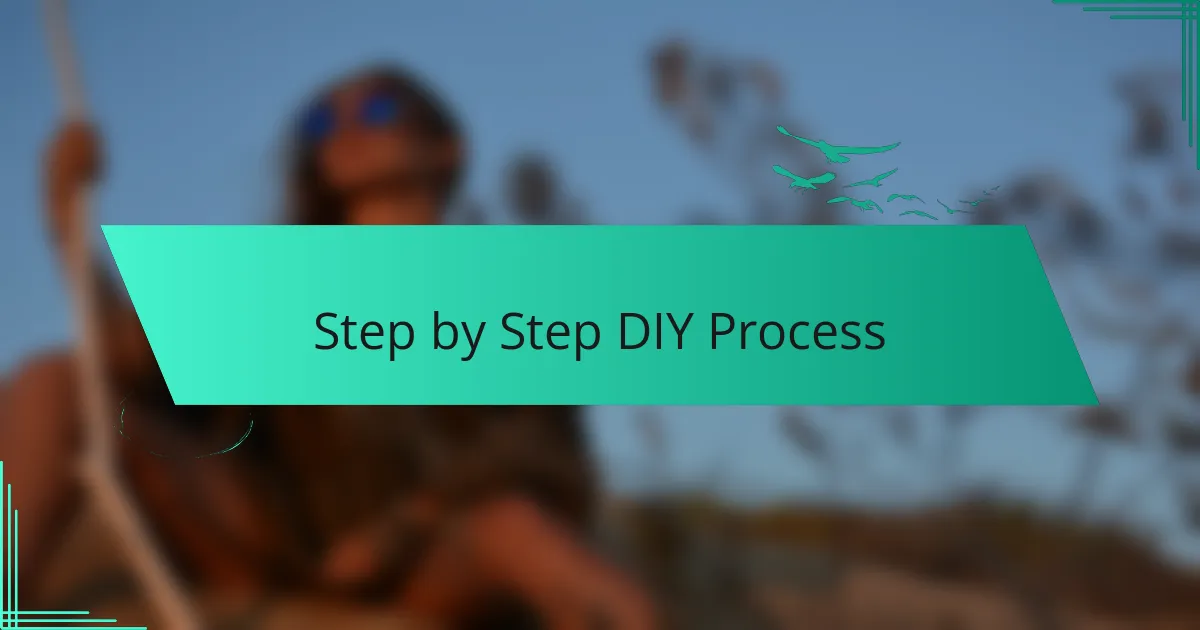
Step by Step DIY Process
To start the DIY process, I always find it helpful to draft my design on paper first. Sketching out my ideas gives me a visual roadmap to follow, and I particularly enjoy which details to emphasize. Once I’ve settled on the design, I move on to making a pattern. I typically use patterning paper, carefully tracing the outline of the silhouette I’ve envisioned. Have you ever noticed how much easier it is to sew when you have a blueprint to guide you? It makes a world of difference!
Next, I cut my fabric according to the pattern. This step always feels like a blend of excitement and nerves for me. I remember the first time I cut into that luxurious silk—I held my breath, afraid I might mess up. But once the fabric was cut and ready, I felt a rush of accomplishment. Pinning the pieces together before sewing is crucial; I can’t stress this enough. I sometimes use fabric clips instead of pins because they hold everything snugly, which I find more convenient, especially with slippery fabrics.
Finally, I dive into the sewing itself. There’s something truly mesmerizing about watching my machine work its magic. I take my time to iron the seams as I go; crisp lines really do elevate the garment. I always remember to take breaks, too—it’s easy to get lost in the process! Does that happen to you? I love how taking a step back allows me to see my creation developing. Each stitch gets me one step closer to bringing Dior’s silhouette to life in my own unique way.
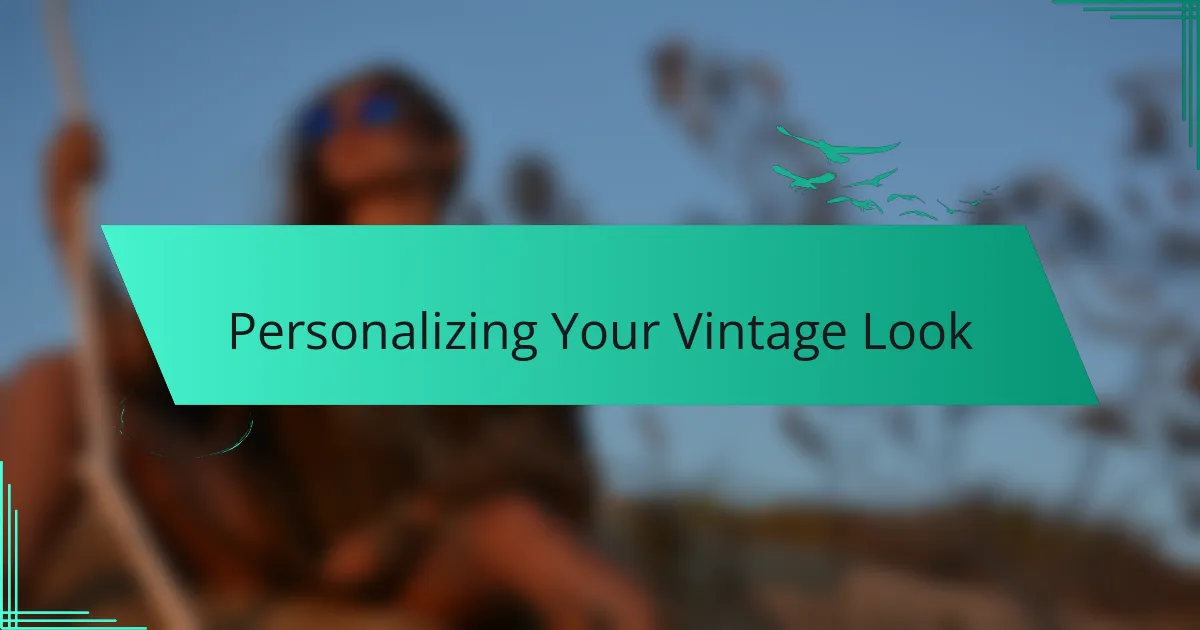
Personalizing Your Vintage Look
Personalizing your vintage look is all about infusing your unique style into classic designs. For instance, I once found an exquisite 1950s dress while thrifting, but it was a little too loose for my liking. Rather than leaving it behind, I tailored it to fit my body perfectly, adapting the silhouette while keeping its vintage charm intact. Have you ever transformed a piece to make it truly yours? The satisfaction of wearing something you’ve customized is unparalleled.
Another great way to personalize is through the accessories you choose. I love experimenting with vintage brooches and scarves to add my flair to a look. One time, I paired a 1940s-inspired dress with a modern belt; it felt refreshing, bridging different eras in fashion. It’s like creating a conversation between the past and the present. How do you accessorize to make a vintage piece feel current and relevant?
Lastly, don’t shy away from integrating modern fabrics or techniques into your vintage wardrobe. I remember trying out a bold print fabric for lining a classic trench coat. This small change made the coat feel fresh while still embodying its vintage roots. It’s in these personal touches that our style truly blossoms. What will your next vintage transformation look like?
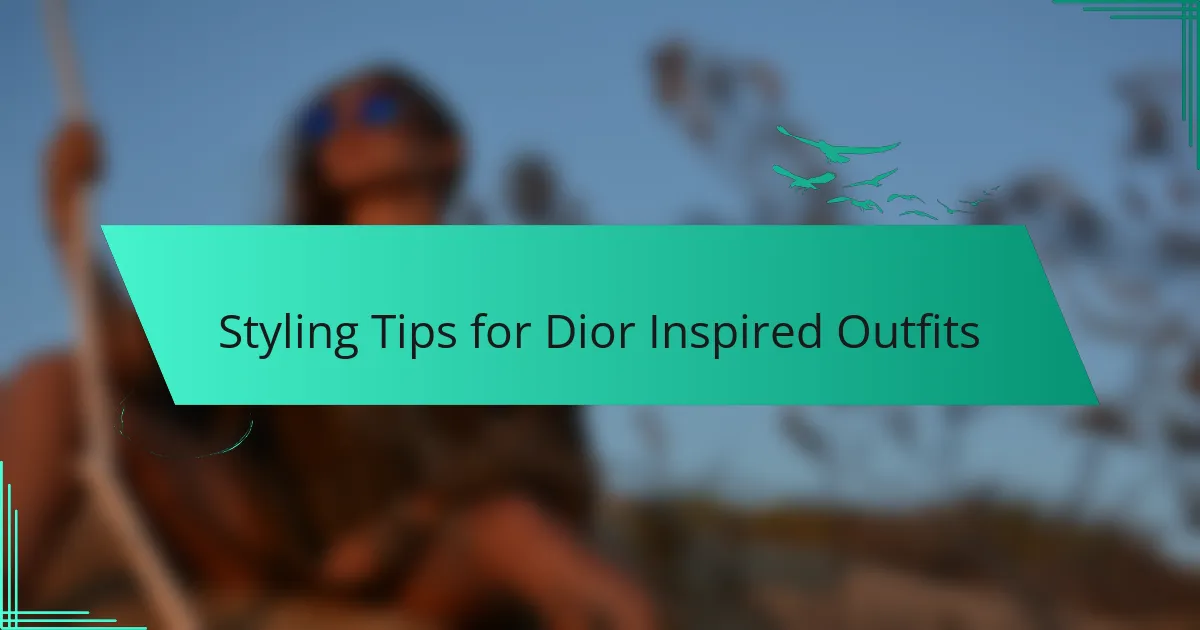
Styling Tips for Dior Inspired Outfits
Embracing Dior’s iconic silhouette in your outfits can be both exhilarating and creatively fulfilling. One styling tip that I often rely on is to play with proportions. For instance, when I wear a full skirt, I always opt for a fitted top to create that beautiful hourglass effect. Have you ever noticed how the combination of structured silhouettes paired with soft fabrics can elevate a look? That balance truly enhances the elegance that Dior championed.
Accessories can also make a significant impact. I remember pairing a vintage-inspired dress with a statement pearl necklace, which added just the right touch of opulence. Mixing vintage jewelry with modern pieces can create a stunning contrast that feels fresh. What’s your go-to accessory that adds personality to your outfit? I find that a simple belt can define my waist and completely change the vibe, drawing on the essence of Dior’s classic designs.
Lastly, consider the colors and patterns that resonate with you. I’ve discovered that while classic black and white can evoke timeless elegance, incorporating bold colors or playful prints can reflect my personality. I once added a pop of yellow to a Dior-inspired outfit, and it turned heads! Experimenting with different hues can let your outfit tell a story all its own. What colors make you feel confident and stylish? Fashion, after all, is a chance to express who we are, both past and present.
